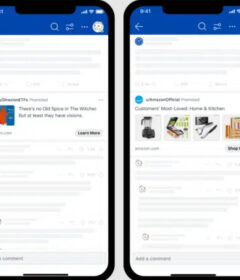3 key trends impacting search marketing today

From privacy legislation to campaign consolidation, here’s a rundown of events that significantly impact the search marketing industry.
But today, the pace of change in search marketing is accelerating, with more shifts expected in the next two years than in the past eight combined.
Evolution in search has been a slow march toward automation and consolidation. To get ahead of the curve, we must stay current on what’s changing and learn the reason behind it.
Here’s a rundown of events that have a significant ripple effect on the search marketing industry.
1. Privacy legislation and signal loss
In May 2018, the General Data Protection Regulation (GDPR) was enforced across Europe. GDPR gave EU citizens many rights over personal data, including access to correct, delete, and port data.
Organizations that violate the GDPR can be fined up to €20 million or 4% of their global annual turnover, whichever is greater.
Another important date for internet privacy is September 2020, when iOS14 launched on Apple devices. The update included a new feature called App Tracking Transparency (ATT), allowing users to opt out of being tracked by apps.
This change has made it more difficult for advertisers to track users across apps and websites, reducing the effectiveness of targeted advertising. This iOS update changed the landscape of digital advertising.
Another watershed event – albeit forthcoming – is on July 1, 2023, when CPRA (California Privacy Rights Act) becomes fully enacted. CPRA applies to businesses that collect personal information about California consumers, regardless of the company’s location.
The CPRA has the authority to investigate and prosecute violations of the law, and it can impose fines of up to $7,500 per violation. CPRA has some legislative teeth with heavy penalties for non-compliance.
Google has announced that it will phase out third-party cookies in Chrome by the second half of 2024. This change will significantly impact online advertising since third-party cookies are crucial for targeting ads. They enable advertisers to target specific audiences and track online advertising performance.
Google aims to improve privacy by phasing out third-party cookies, often used for tracking and advertising. By phasing third-party cookies, Google makes it harder for websites to track users across different sites.
The browser market share in the United States looks is as follows:
- Chrome: 49%
- Safari: 35%
- Edge: 8.5%
- Firefox: 3.5%
By the end of 2024, third-party cookies will be effectively retired, as Chrome, Safari and Firefox represent almost 90% market share of web traffic in the United States.
Google Privacy Sandbox is developing alternative methods to target audiences and track ad performance without third-party cookies. These initiatives from Privacy Sandbox include:
- FLoC (Federated Learning of Cohorts): FLoC proposes replacing third-party cookies with a more privacy-friendly way to group users based on their interests. FLoC would allow advertisers to target ads to groups of users with similar 53gb interests without being able to track individual users across different websites.
- Topics API: The Topics API is a proposal to allow websites to request a list of topics a user is interested in. Advertisers can use this information to show the user more relevant ads.
- Trust Token API: The Trust Token API is a proposal to allow websites to verify the identity of users without the need for third-party cookies. Trust Tokens can be used to prevent fraud and improve the security of online transactions.
Performance measurement and audience targeting have been the cornerstone of digital marketing.
The evolution of digital privacy has forced ad-serving platforms such as Google, Microsoft, Facebook, and others to develop new modes of targeting and measurement.
As the ad serving platforms change, marketers must also modernize their strategies to stay competitive.
2. Machine learning and automation
Machine learning algorithms have advanced significantly in recent years in parallel with signal loss caused by advancing privacy legislation.
As a result of these two changes, advertising platforms such as Google, Facebook, and Microsoft are overhauling their ad platforms to rely on automation and artificial intelligence.
Google is always playing the long game. Historically, they have known that marketers needed support with cross-campaign attribution.
In addition, Google has known for a long time that data is going to become restricted due to privacy advancement. Finally, this foreknowledge is coming to fruition with automation and consolidation.
Google Ads introduced data-driven attribution (DDA) in September 2021.
DDA is a machine learning model that uses your account’s historical data to determine how people interact with your various ads and decide to become your customers.
DDA can help you improve your Google Ads campaigns’ performance by providing a more accurate view of how your ads contribute to conversions.
Bid algorithms aren’t exactly new in paid search advertising. Google introduced Smart Bidding in 2013 with the launch of target CPA (tCPA) bidding. The ability to bid to dynamic values such as revenue and ROAS was introduced in 2017.
As with most changes, the adoption of these features was slow. Many advertisers did not want to relinquish control of bidding to the platforms.
Loss of control and expanded reliance on machine learning will be a continued theme for digital advertising.
Over time, Smart Bidding algorithms have improved significantly, and they are now the preferred method of bid management. Manual bidding still occurs for some aspects of campaigns, but the usage continues to dwindle.
As data and automation evolve, the core functionality of keywords is changing too. Google Ads changed the functionality of exact match in 2021. Previously, exact match keywords would only trigger ads for searches that matched the keyword exactly.
However, now exact match keywords can also trigger ads for searches that are close variants of the keyword. This change means ads may show for searches that include misspellings, synonyms, and other close variants of keywords.
It is no secret that Google and Microsoft have aggressively encouraged advertisers to expand into the broad match. However, many advertisers, including myself, had a negative perception of broad matches. The query matching was too general, and traffic quality was often subpar.
Over the past two years, we have expanded our broad match usage. Broad match can provide additional search coverage and revenue growth when paired with well-crafted bid algorithms. Consider testing it again if you have shied away from broad match.
In July 2021, Google Ads retired broad match modified (BMM). Microsoft Ads followed suit by retiring their BMM offering in March 2023. This is the beginning of keyword match type consolidation.
(This is pure speculation, but Google/Microsoft will retire another match type within 12-18 months.) If I had to make a prediction, phrase match would be phased out in favor of exact (for control) and broad (for reach).
These changes directly result from machine learning advancement within ad-serving platforms like Google Ads and Microsoft Ads.
3. Campaign consolidation
Data-driven attribution was an essential element for campaign consolidation within Google Ads. Google’s ad serving algorithm mastered user intent on their core search product.
The algorithms needed to understand how ads performed across channels within the Google ad ecosystem.
Once the algorithm understood how to optimize across Google properties, that opened the door for further consolidation. Campaign consolidation first came as Smart Shopping on Google and Microsoft.
Google Smart Shopping was a campaign that allowed businesses to automatically show their product ads across Google’s search network, YouTube, Display Network, and Gmail. Smart Shopping campaigns used machine learning to optimize bids and placements.
Throughout 2022, advertisers had to migrate Smart Shopping campaigns to Performance Max. As a result, performance Max (PMax) is the current peak of campaign consolidation.
PMax allows advertisers to access new inventory, ad formats, and audiences across all Google channels, including YouTube, Search, Gmail, Shopping, and Discovery.
Another consolidation point will include Dynamic Search Ads (DSA) into PMax. Google has not provided a specific date for this migration, but the company has said it is working on integrating the two features and expects to make the change soon.
Staying ahead of the curve
The last five years have felt like the slow incline of a roller coaster. And it feels like the next two years will be a screaming rush of the drop.
The drop will be driven by privacy legislation, machine learning, automation, and artificial intelligence. Buckle in, folks!


